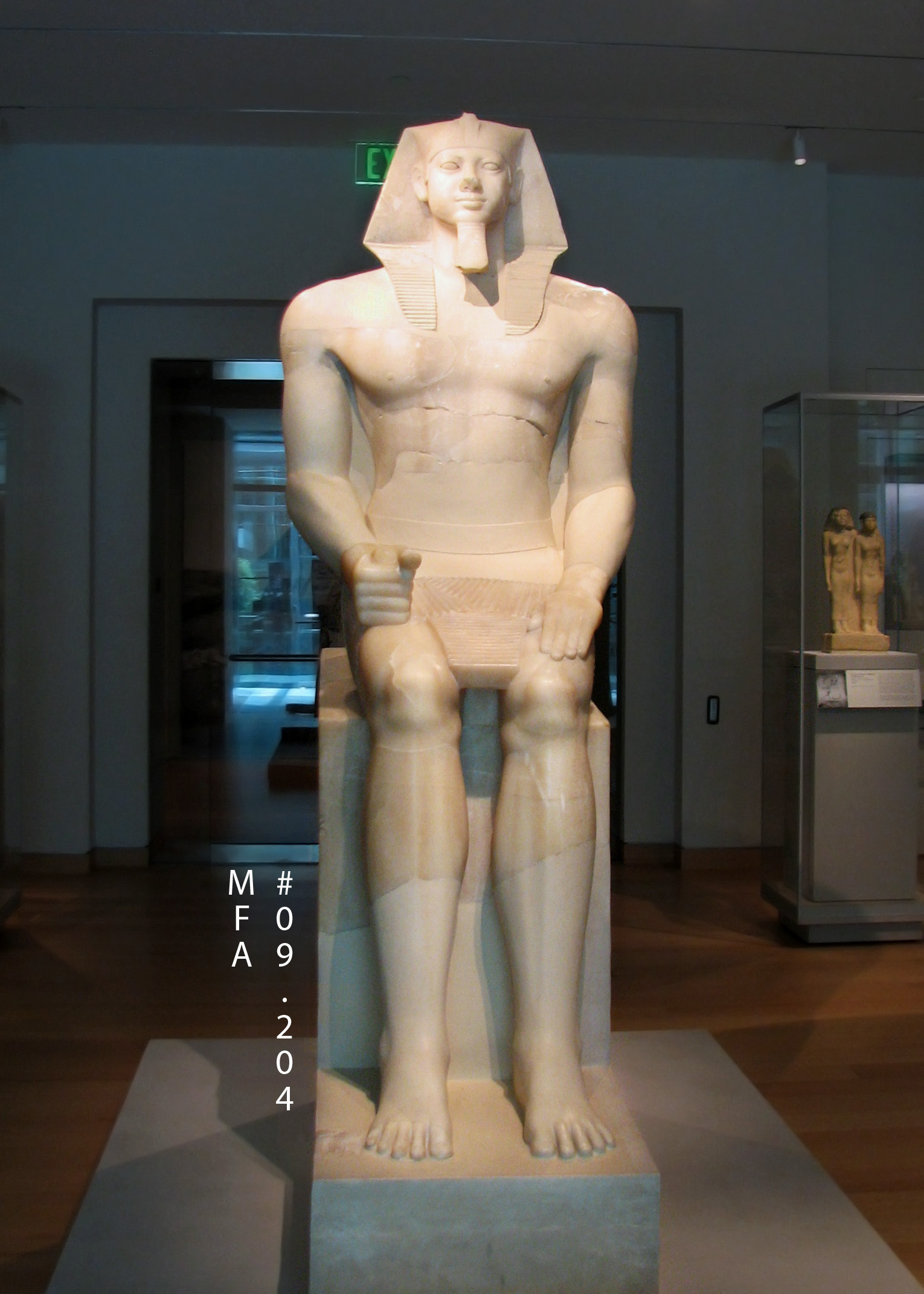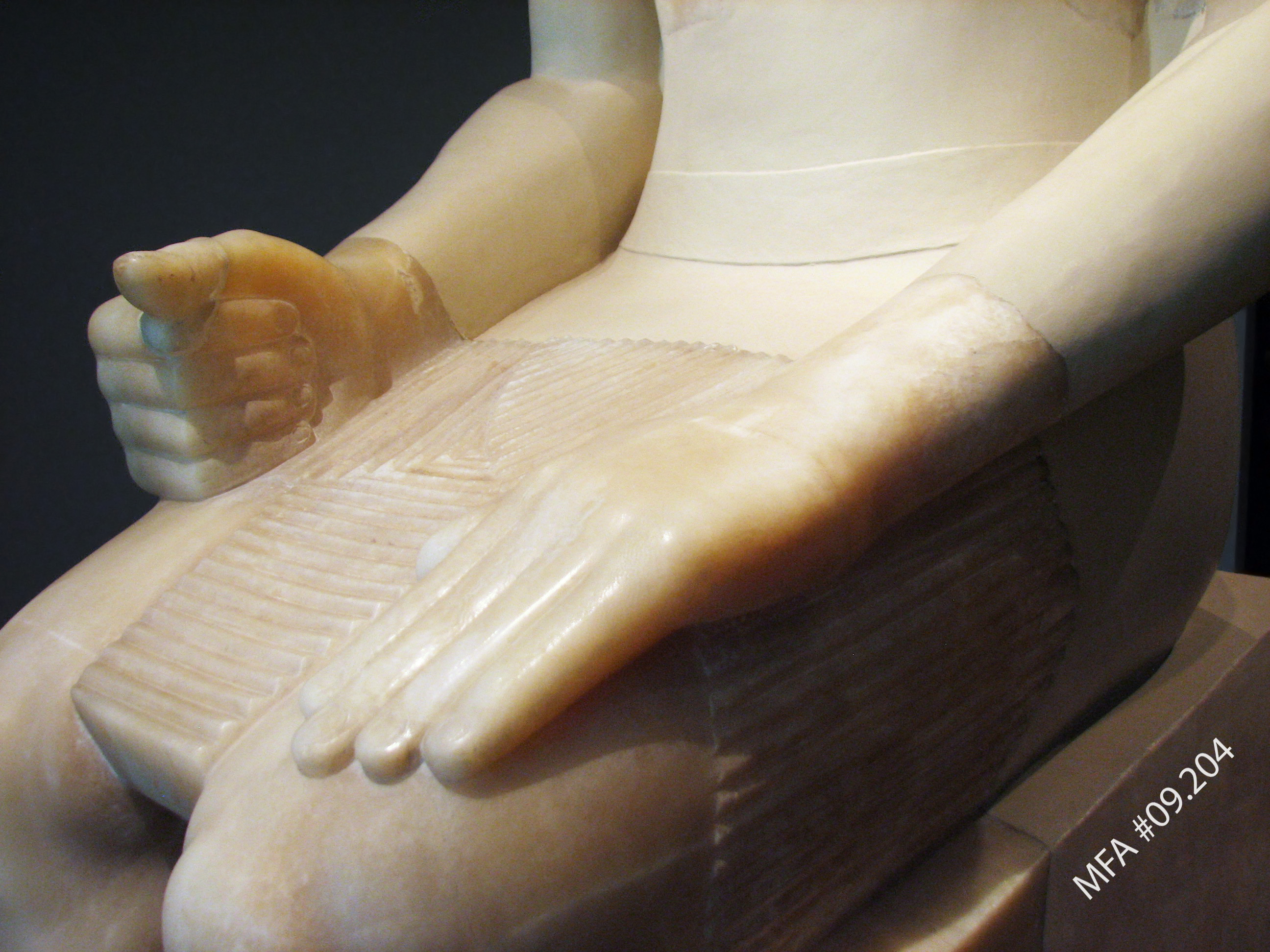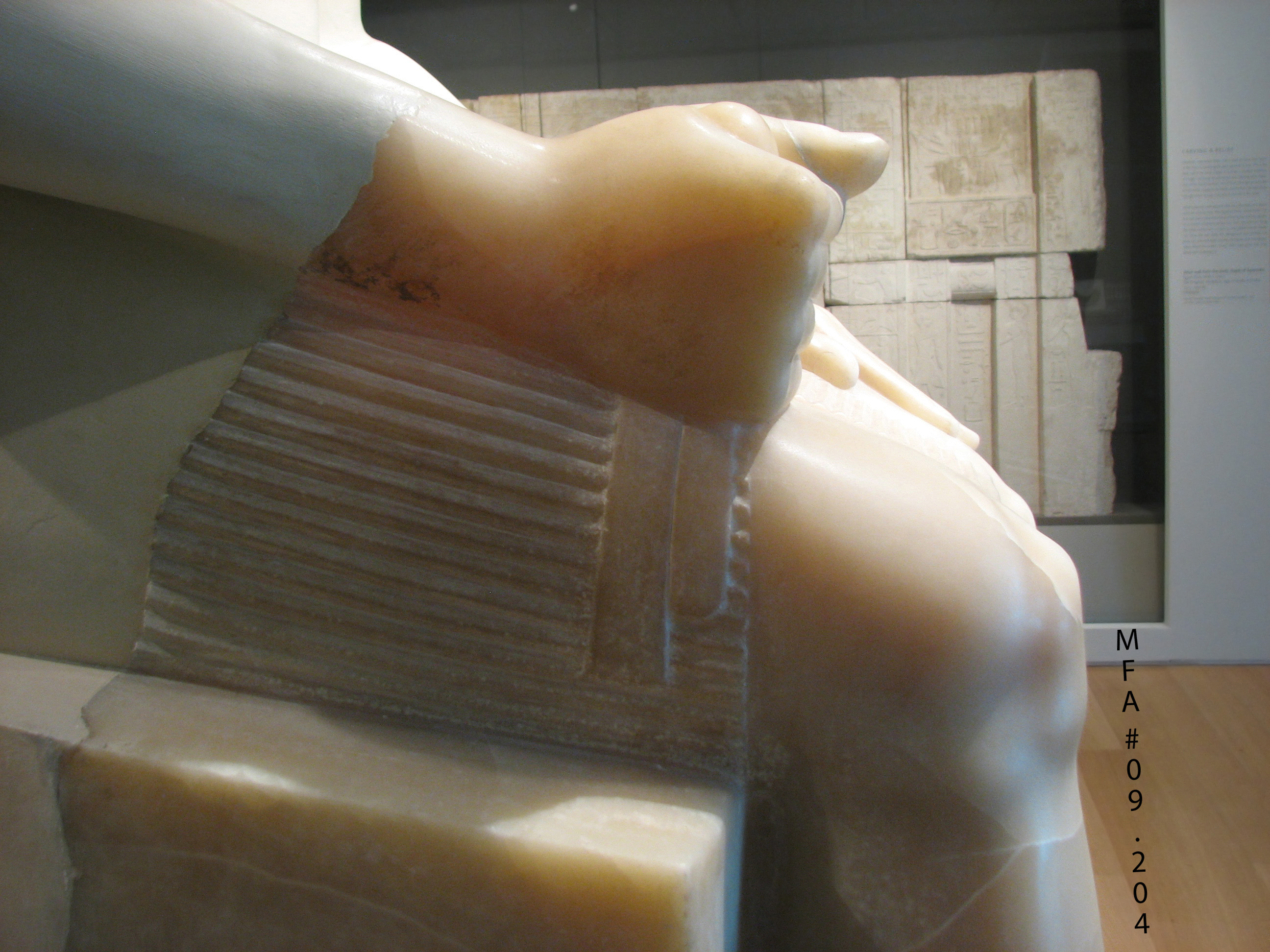
Colossal statue of King Menkaura (Mycerinus)
Travertine (Egyptian alabaster), 2490–2472 B.C.E.
Size: 243.8 x 115.6 x 83.8 cm (96 x 45 1/2 x 33 in.)
Harvard University—Boston Museum of Fine Arts Expedition 1909, MFA #09.204
 Colossal statue of King Menkaura (Mycerinus) Travertine (Egyptian alabaster), 2490–2472 B.C.E. Size: 243.8 x 115.6 x 83.8 cm (96 x 45 1/2 x 33 in.) Harvard University—Boston Museum of Fine Arts Expedition 1909, MFA #09.204
|


All photos ©Joan Ann Lansberry, 2014